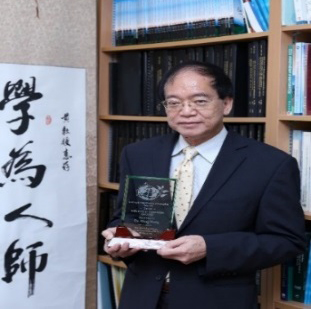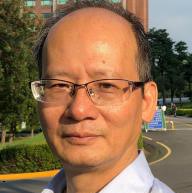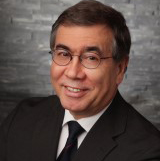Keynote Speakers
Prof. Ming-Hung Wong
Advisor/Research Chair Professor of Environmental Science, The Education University of Hong KongSpeech Title: Dumping Waste at Sea as a Waste Management Option: The Case of Dumping Contaminated Sediment in Hong Kong
Abstract: From about 1850 to World War II, dredged sediment, municipal solid waste, and ship wreckage were dumped at sea. Sewage sludge was shipped to the North Sea and dumped at sea from Britain to reduce the pollution of municipal solid waste to the Thames in 1887. From World War II to 1972, discarded munitions, chemical warfare agents, and low-level waste were dumped at sea. The London Dumping Convention (1972) came to force to control the dumping of industrial waste, construction waste, etc. In the early days, sewage sludge and contaminated sediment were dumped at designated sites (coastal marine areas) in Hong Kong. The higher contents of heavy metals and organic pollutants caused environmental problems. This presentation focuses on two projects related to dumping contaminated sediments, one before and one after adopting the Environmental Impact Assessment in waste management in Hong Kong. For the 1st project, there were massive fish kills in fish culture zones due to contaminated sediment. The former shipyard was transformed into the Disney Land, and contaminated sediment was spread into fish culture zones during transportation to the dumped sites, causing massive fish kills, with a considerable compensation provided for the fish farmers. For the 2nd project, scientific inputs were used for monitoring and assessing the potential impacts of the dumped sediment at the designated dumping sites, with stringent requirements of constructing the facilities for containing the dumped sediment during the construction, pitching, and closing of the facilities when the deposit is complete. Detailed information is provided on the use of scientific inputs in ensuring the ecological and human health safety of the dumping sites and the surrounding areas, especially the nearby mariculture sites.
Biography: Prof. Wong is currently Advisor/Research Chair Professor (Environmental Science) of The Education University of Hong Kong, Member of the European Academy of Sciences and Arts, Chang Jiang Chair Professor of Ministry of Education, China, and Editor-in-Chief of Environmental Geochemistry and Health (Springer Nature). His research areas included environmental toxicology of persistent toxic substances, ecological restoration of contaminated sites, and resource reuse. Professor Wong has published more than 800 SCI papers. According to the World’s Top 2% Scientists List (Stanford University, 2019 and 2021), he ranked No. 6 (career-long) globally under Environmental Sciences, based on citation impact.
Prof. Wong served as the Coordinator of Central and North-East Asia of the project “Regionally based assessment of Persistent Toxic Substances”, and as a Panel Member (of three experts) of another project, “Chemicals Management Issues of developing countries and countries with economies in transition”, both sponsored by UNEP/GEF, during 2001-2003, and 2010-2012, respectively.
Prof. Chih-Huang Weng
Chairman of Department of Civil Engineering I-Shou UniversitySpeech Title: Adsorption Characteristics of Ni(II), Zn(II), and Cu(II) Ions onto Pineapple Leaf Biochar
Abstract: Although research on metal adsorption via biochar has gained intensive attention over the last decade, the reaction mechanisms responsible for metal adsorption remain uncertain. This is the first work that provides direct evidence on the identification of Ni(II), Zn(II), and Cu(II) adsorption mechanisms on pineapple leaf biochar (PLB) using surface characteristics analyses, including X-ray photoelectron spectroscope (XPS), Fourier transform infrared spectroscope (FTIR), and scanning electron microscope with energy-dispersive X-ray spectroscope (SEM-EDS). Indispensable parameters, including temperature, ionic strength, and pH, affect much on adsorption. From Langmuir isotherm fitting, the maximum adsorption capacity of PLB for Ni(II), Zn(II), and Cu(II) are 44.88, 46.00, and 53.14 mg g-1, respectively, surpassing all biochars reported in the literature. Findings of surface characterization techniques coupled with cation released during adsorption, cation exchange, and surface complexation mechanisms were proposed. PLB is reusable and remains sufficient adsorption capacity even six consecutive cycles via pressure cooker regeneration. With high regenerability and ultrahigh adsorption capacity, PLB defines itself as a promising cost-effective adsorbent for future applications in metal-laden wastewater.
This study also provides framework for understanding how metal ions react with biochar.
Biography: Professor Chih-Huang Weng is the Chairman of Department of Civil Engineering at I-Shou University, Taiwan. He also served as vice-president of North Kaohsiung Community University, Taiwan. He received his MS and Ph.D. degrees in 1990 and 1994, respectively, from the Department of Civil Engineering of The University of Delaware, USA. He has published over 100 journal articles with around 7050 citations, 43 h-index and 80 i10-index in google scholar database. Based on the 2020 updated science-wide author databases of standardized citation indicators (https://journals.plos.org/plosbiology/article?id=10.1371/journal.pbio.3000918), his publication citation was listed on the top 1% and ranked at 263rd among 42482 authors in the category of Engineering, Environmental. He was listed in the World’s Top 2% Scientists based on 2021 Sandford University published an update database of the most widely cited scientists in different disciplines. He has earned number of awards and honors, including the National Innovation Award by the Research Center for Biotechnology and Medicine Policy, Taiwan. He is serving as the Associate Editor of Environmental Geochemistry and Health (Springer, since 2020) and on the Editorial Board Panel Member of Coloration Technology (Wiley, since 2013). He has also served as a Guest Editor of SCI journals, such as Agricultural Water Management (V. 174, Aug. 2016 (https://doi.org/10.1016/j.agwat.2016.06.012) and Environmental Science and Pollution Research (V. 26, issue 30, Oct. 2019 (https://doi.org/10.1007/s11356-019-06281-w); V. 27, issue 31, Oct. 2020 (https://doi.org/10.1007/s11356-020-09994-5), V. 28, issue 34, Sep. 2021 (https://doi.org/10.1007/s11356-021-15004-z), V. 29, issue 9, Feb. 2022 (https://doi.org/10.1007/s11356-021-17392-8). He has also organized and chaired several international conferences. His main research interests focus on using advanced oxidation processes and adsorption for the treatment of wastewater and bacteria inactivation, ground water modeling, and application of electrokinetic technologies to soil remediation/sludge treatment/activated carbon regeneration.
Prof. Rolf Katzenbach
IK & Technical University of Darmstadt/CEO of Consulting Office “Ingenieursozietät Professor Dr.-Ing. Katzenbach GmbH”, GermanSpeech Title: Innovative and CO2-minimized foundation technology for high-rise buildings
Abstract: The reduction of CO2 emissions is from the technical and ecological perspective currently all over the world one of the major challenges. In that context the question arises, what we can do from the civil engineering side, to reduce the CO2 emissions during construction and during operation of our buildings. There are - for example - the following possibilities, especially in the area of the foundation of high-rise buildings:
i) intelligent and optimized application of deep foundations (pile groups) by taking into account the interaction between raft (pile cap) and piles and designing a Combined Pile-Raft Foundation (CPRF).
ii) science-based and thorough analysis, evaluation and interpretation of large scale pile-load tests.
iii) using piles as energy-piles, which means, that the piles of a deep foundation are used twice: as construction element, carrying the load into the ground, and as heat exchanger, using the thermal capacity of the soil.
All these aspects are described in the Keynote Lecture, starting with the description of the environmentally friendly Combined Pile-Raft Foundation (CPRF) as innovative and CO2-minimized foundation technology.
By application of the CPRF it is possible to reduce the CO2 emission of the construction of the deep foundation significantly; in addition, we save a lot of money and a lot of time by using the CPRF technology and can use the piles as energy piles.
For practitioners the essentials of “ISSMGE Combined Pile-Raft Foundation Guideline” are presented.
Biography: Professor Dr.-Ing. Rolf Katzenbach is since 1993 Full-Professor of the Technical University of Darmstadt, Germany, and is CEO of his Consulting Office “Ingenieursozietät Professor Dr.-Ing. Katzenbach GmbH”. He is Past-Chairman of TC 212 Deep Foundations and of TC 215 Environmental Geotechnics of the International Society for Soil Mechanics and Geotechnical Engineering (ISSMGE) and Board Member of several other international and national organizations.
He is member of the Chamber of Engineers and publicly certified official Expert of Geotechnics and Independent Checking Engineer working with his expertise for national and international courts of justice, the International Chamber of Commerce (ICC, Paris) arbitration committees, insurance companies, state ministries, building authorities and big national and international financial institutions and investors.
Professor Katzenbach is involved in a lot of national and international projects, regarding value engineering and the safety and serviceability of buildings and structures.
Due to his outstanding expertise and knowledge Professor Katzenbach was for example appointed by the Building and Construction Authority (BCA) Singapore to carry out the independent Peer Review for the new Metro Line DTL3 in Singapore.
The Kingdom of Saudi Arabia appointed Professor Katzenbach as an internationally recognized expert to check the safety of the foundation of the 1,007 m high Jeddah Tower (former name: Kingdom Tower) in Jeddah which will become the highest high-rise building of the world.



